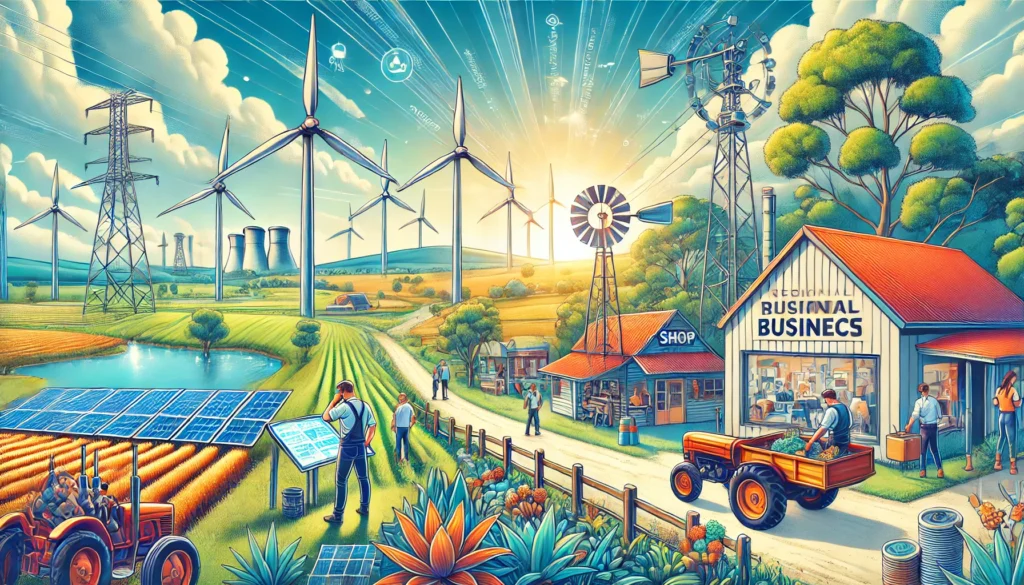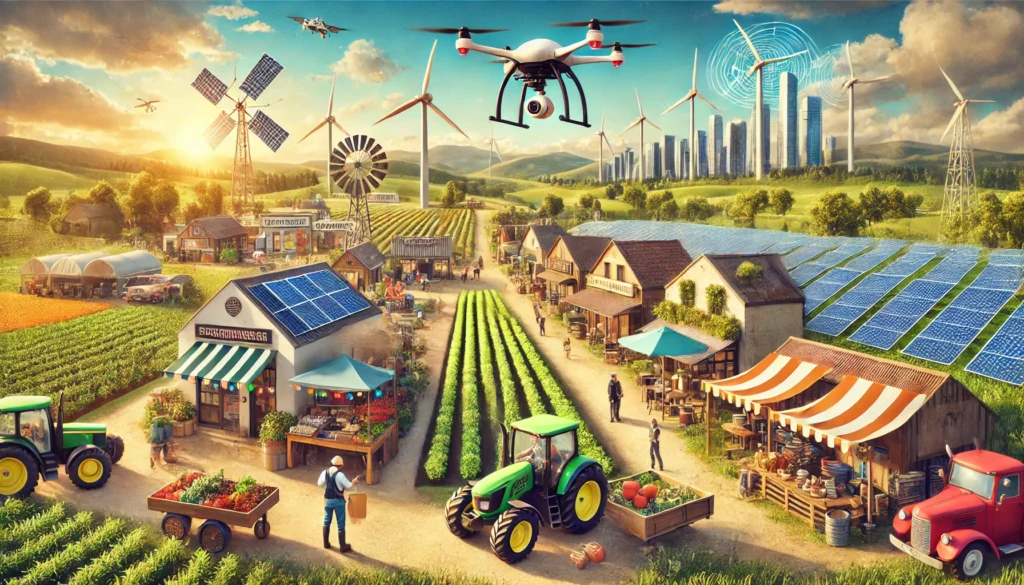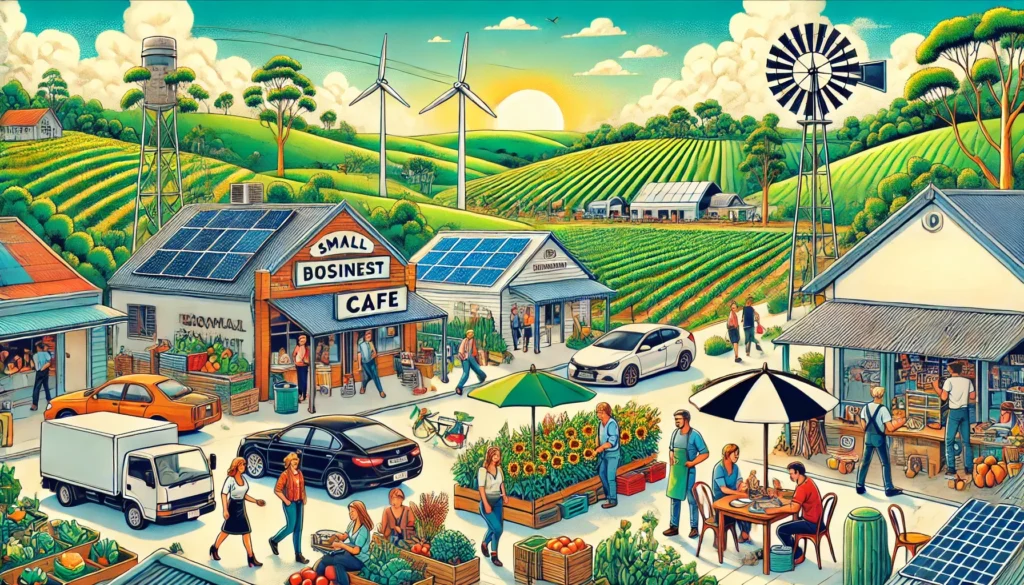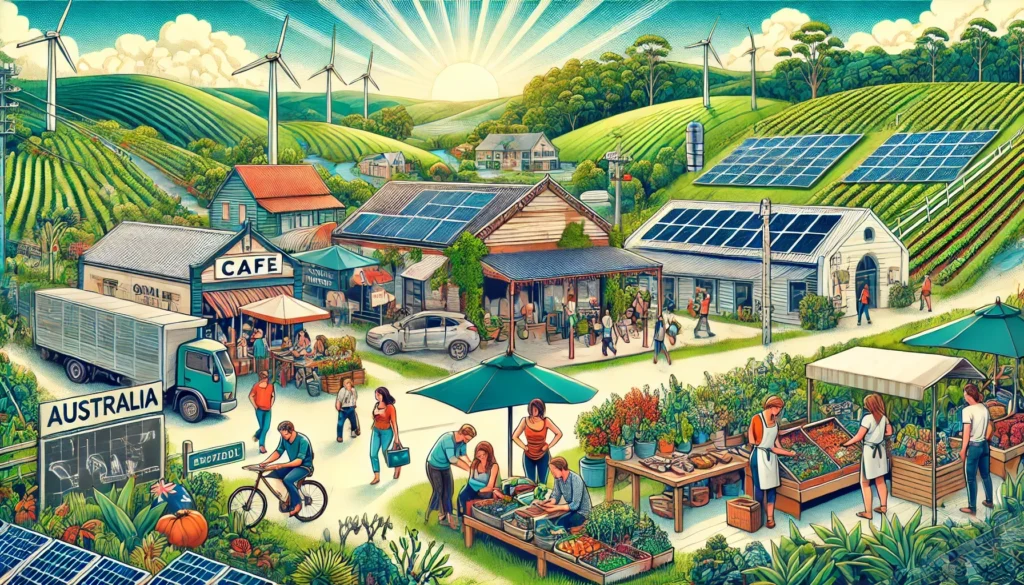In a world that’s becoming increasingly connected yet challenged by the hustle of urban living, regional Australia is emerging as a centre of opportunity.
Entrepreneurs, investors, and policymakers are beginning to notice the vibrant potential in areas often overlooked, driving regional business growth and enabling economic development in regional Australia. While metropolitan hubs have long dominated the business landscape, regional Australia is rewriting the rules, proving that innovation and vitality don’t need a skyscraper backdrop to thrive.
For many, the idea of starting or expanding a business in a rural area can seem daunting. Questions about access to infrastructure, skilled labour, and market connectivity come into the minds of those accustomed to urban conveniences. Yet, beneath these concerns lies a transformative narrative—one where regional business growth is not only possible but flourishing. From dynamic agricultural ventures to innovative tech startups, rural entrepreneurship is reshaping industries, communities, and lives.
The Landscape of Regional Business Growth
Regional Australia has seen a remarkable increase in entrepreneurial activity and investment, driven by a combination of economic, social, and technological factors. As urban centres become increasingly congested and costly, many individuals and businesses are turning their attention to the opportunities available in rural areas.

Key Drivers of Regional Business Growth
- Affordability and Accessibility: Lower costs of living and operations provide a financial cushion for startups and small businesses.
- Improved Infrastructure: Enhanced transport networks and access to high-speed internet make regional areas more business-friendly.
- Community Support: Strong community networks promote a collaborative culture that supports business success.
Spotlight Industries
- Agriculture: Integrating technology for sustainable practices and global market access.
- Tourism: Highlighting Australia’s natural beauty through eco-tourism and cultural experiences.
- Renewable Energy: Regional areas lead clean energy transitions with major solar, wind, and hydro projects.
Economic Development in Regional Australia
Economic development in regional Australia is building resilient, self-sustaining communities through strategic investments and innovative projects. A notable example is the MacIntyre Wind Farm in Queensland, one of the world’s largest onshore wind farms, creating approximately 400 jobs during construction and delivering significant local economic benefits.

Case Studies
- Bellamy’s Australia: Bellamy’s, founded in Tasmania, has become a leading organic infant formula producer, exporting globally. This highlights the importance of market research and timing.
- Government Insights: The 2024 State of Australia’s Regions report aligns investments with community priorities, showcasing government support for coordinated development.
The Rise of Rural Entrepreneurship
Rural entrepreneurship has become a cornerstone of regional Australia’s economic revival. Entrepreneurs in these areas bring unique perspectives and solutions to the challenges they face.
Characteristics of Rural Entrepreneurs:
- Resilience and Adaptability: Managing challenges like limited resources with innovative approaches.
- Community-Centric Models: Building loyalty and trust by prioritising local engagement and sustainability.
Support Systems
- Government grants and regional development organisations provide critical assistance.
- Incubators and co-working spaces promote collaboration and innovation.
Innovations Driving Economic Development in Regional Australia
Technology and sustainability are redefining the possibilities for regional businesses, enabling them to compete on both national and global scales.
Innovations by Sector

Digital Transformation
- E-commerce platforms allow businesses to reach wider markets without a physical urban presence.
- Social media helps build authentic customer connections.
Renewable Energy Projects
- Wind farms and solar parks are reducing carbon footprints while creating jobs.
- Renewable initiatives position Australia as a global clean energy leader.
Innovations in Agriculture
- Precision farming techniques boost productivity and sustainability.
- Advances in logistics ensure efficient supply chains for fresh produce.
Overcoming Challenges
While opportunities in regional Australia are vast, hurdles remain. Addressing these challenges is crucial for sustained growth.
Key Obstacles
- Limited access to reliable internet and transport infrastructure.
- Persistent skill shortages in many towns.
Collaborative Solutions
- Public-private partnerships can bridge infrastructure gaps.
- Upskilling programs tailored to regional industries empower local talent.
The Broader Impact on Australia’s Economy
Regional business growth benefits the entire nation by decentralising economic activity and creating more balanced opportunities.

National Benefits
- Relieves congestion in urban centres.
- Strengthens global competitiveness through diverse industries.
Embracing the Potential of Regional Australia
Regional Australia is more than a hidden gem—it’s a dynamic landscape of innovation, resilience, and opportunity. From groundbreaking projects like the MacIntyre Wind Farm to the global reach of Bellamy’s Australia, regional communities are reshaping Australia’s economic future.
Now is the time for entrepreneurs, investors, and policymakers to seize these opportunities and drive forward a vision of balanced growth. Together, we can make regional Australia a cornerstone of sustainable and innovative development.
Take the next step: Will you be part of this transformative journey?
